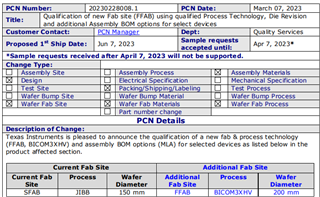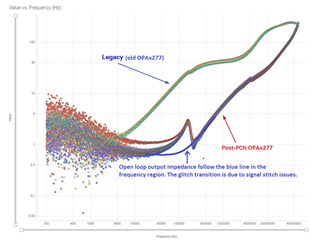Other Parts Discussed in Thread: OPA2192
Tool/software:
When an Nch-FET is connected to the output of an OPAMP (OPA2277, OPA2192), the Nch-FET may oscillate. OPA2277 may oscillate, but OPA2192 does not, so I am looking for data sheets or S-parameters that describe the output characteristics (impedance, capacitance, inductance) of OPA2277 and OPA2192.



